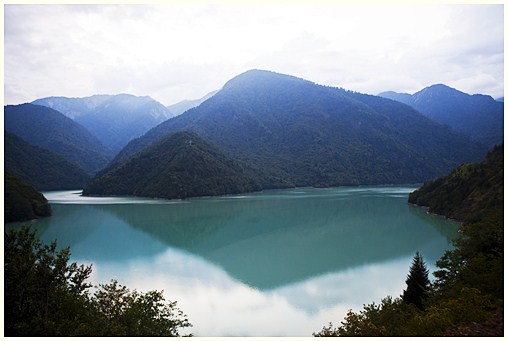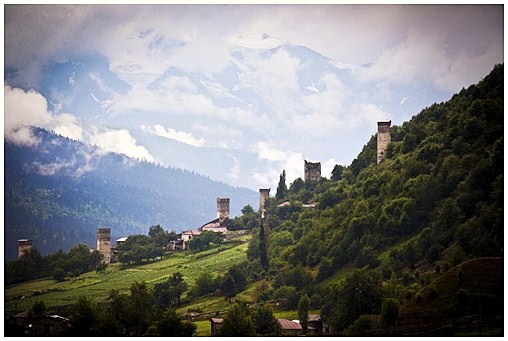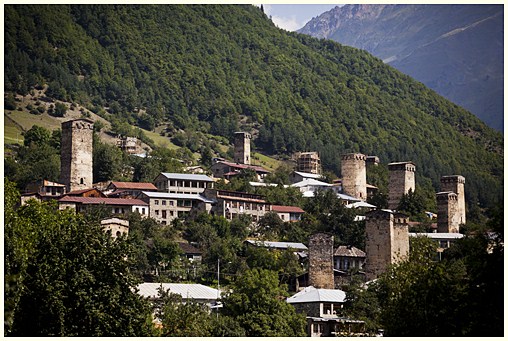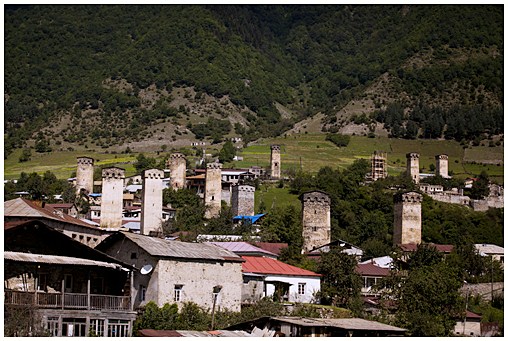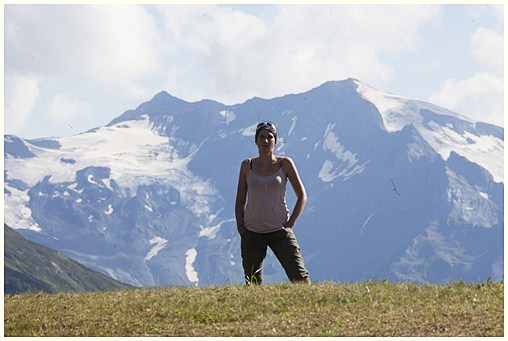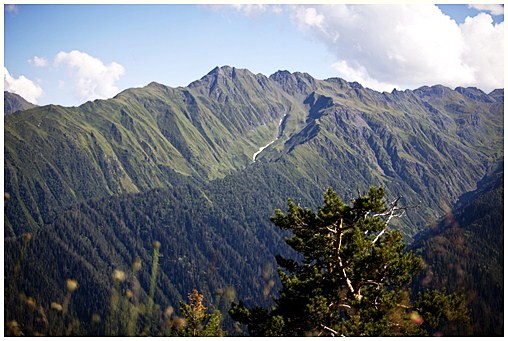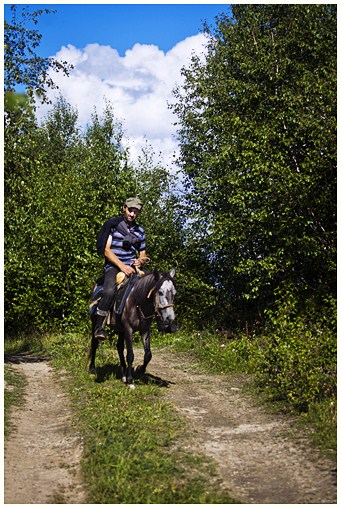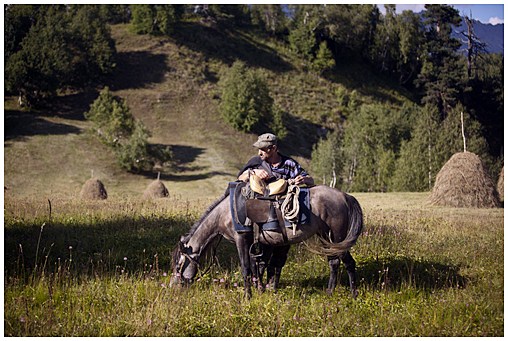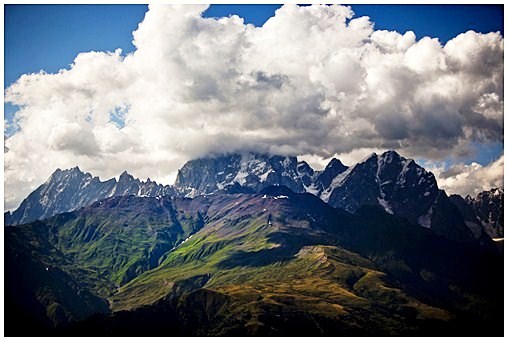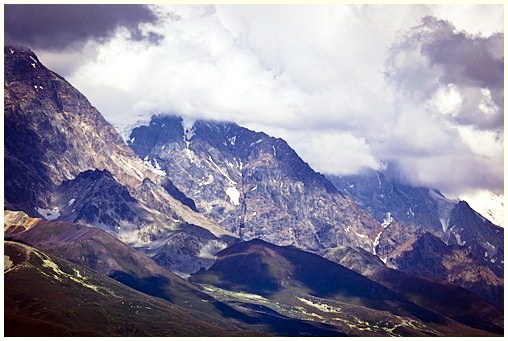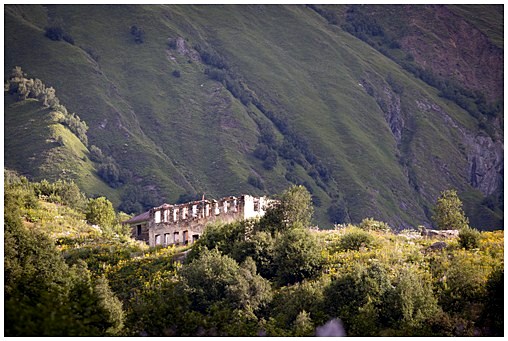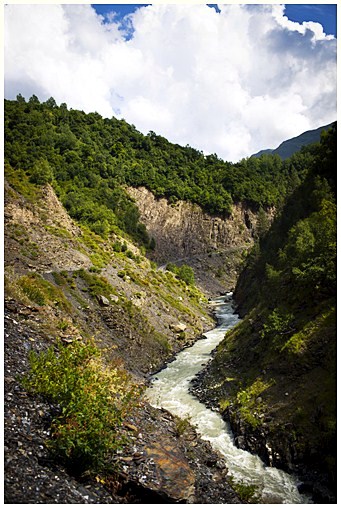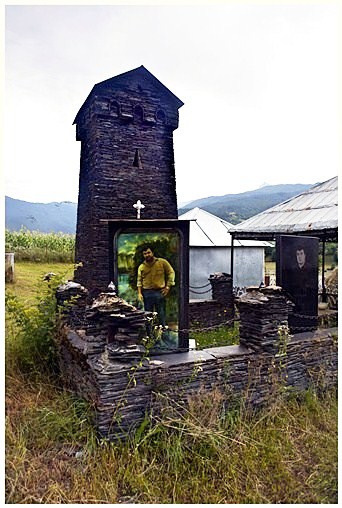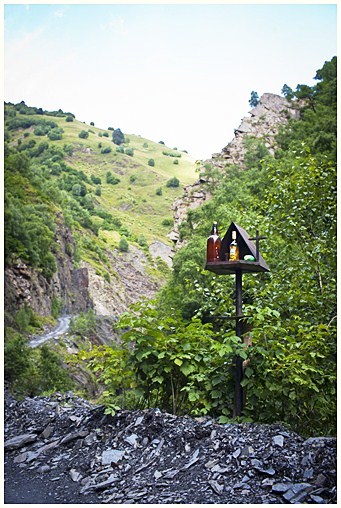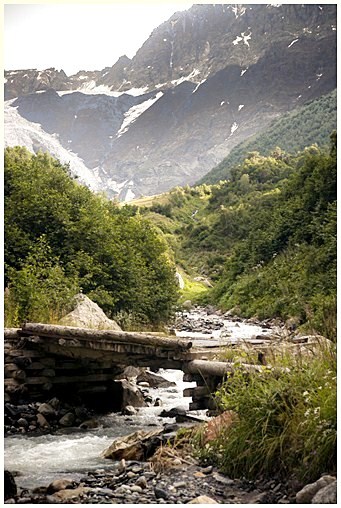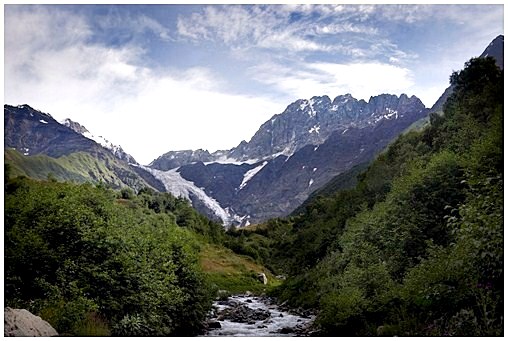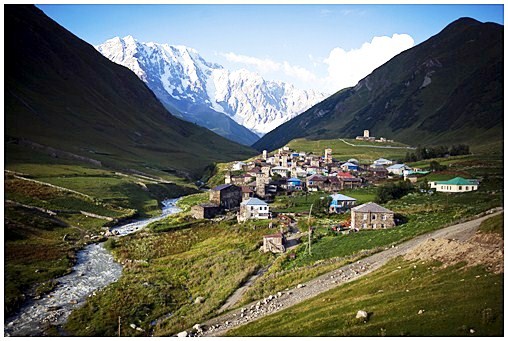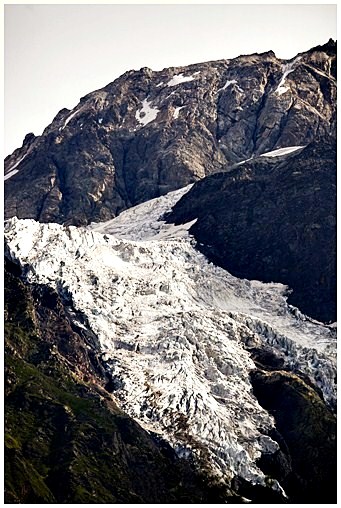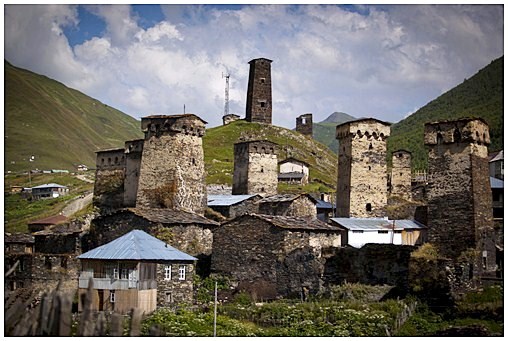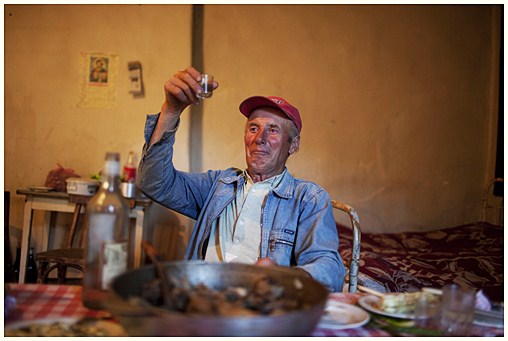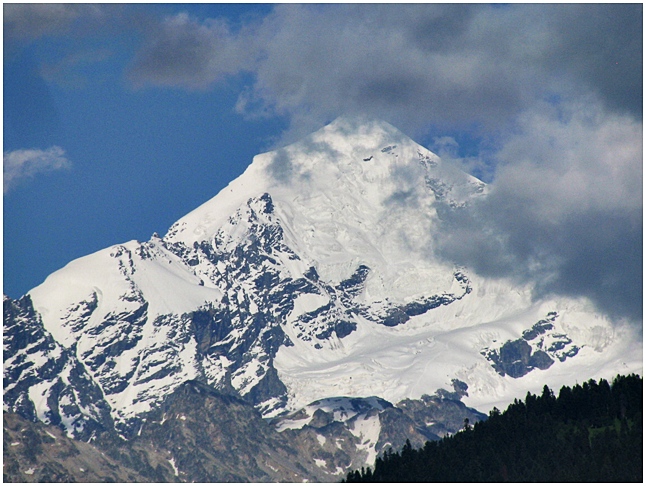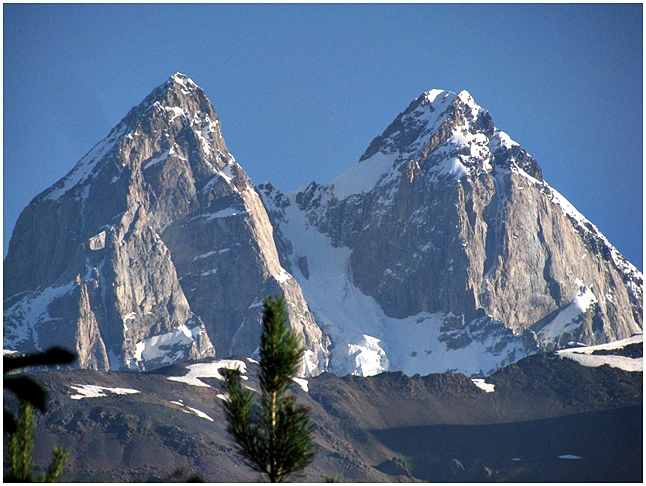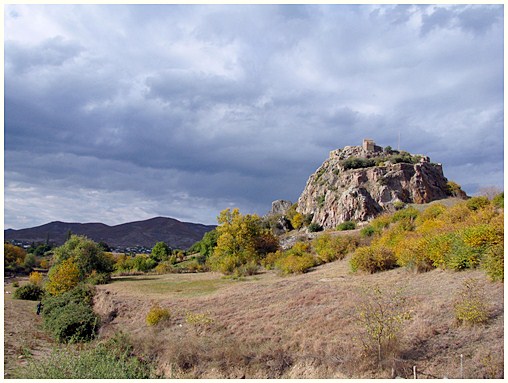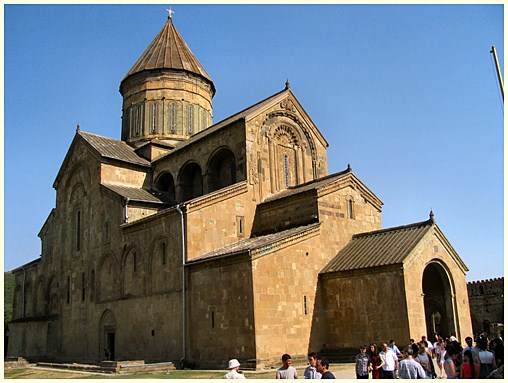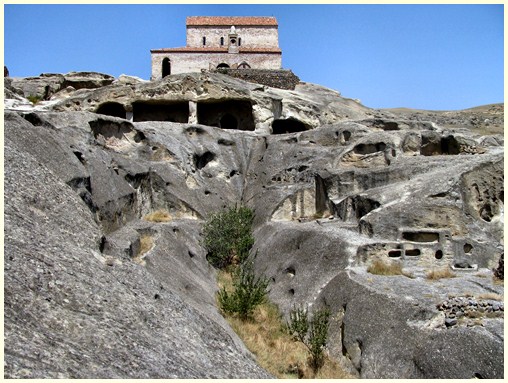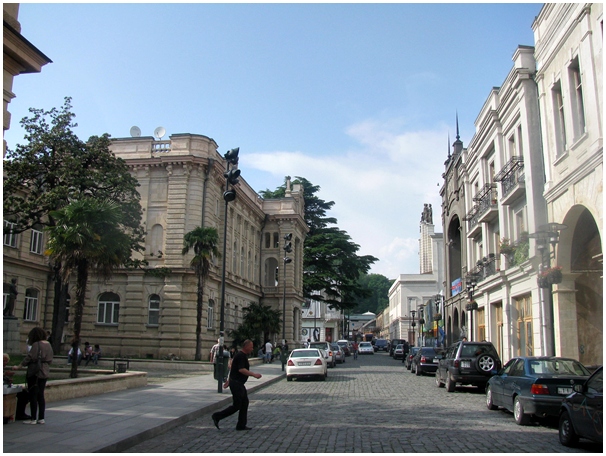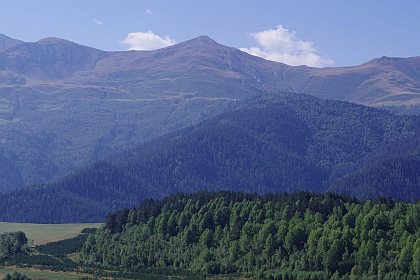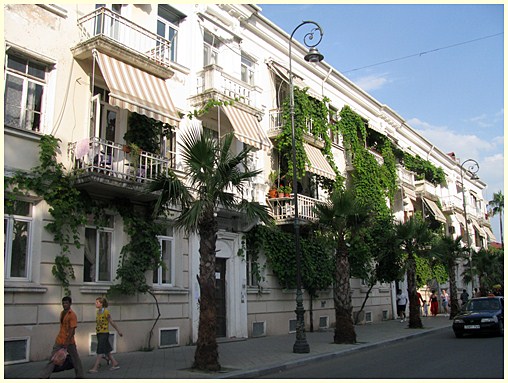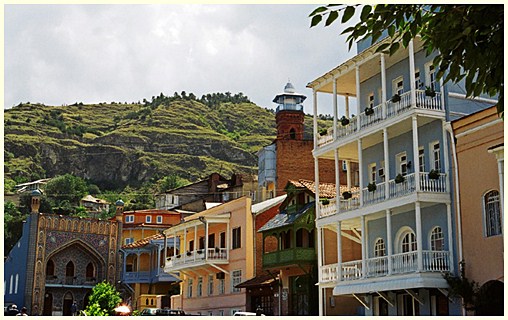Anecdote from the region Svaneti
Grupa zagranicznych alpinistów przyjechala do Svaneti pochodzić po górach. Przybywszy do jednej z miejscowości w regionie wyszukali przewodnika gotowego pomóc im w wspinaczce. Po uzgodnieniu warunków grupa udała się w góry. Idąc wąską i niebezpieczną ścieżką, gdzie z jednej strony była przepaść, a z drugiej wysoka stroma ściana, alpiniści znajdując się w najwęższym miejscu, poprosili Svana o pomoc w asekuracji. Przewodnik zdziwił się nieco i odparł: nie bójcie się, idzcie spokojnie dalej przed siebie, a ja was będę obserwował.
Svaneti is dividd into two parts, Upper Svaneti and Lower Svaneti, separated be the Svaneti Mountain Range. Upper Svaneti has always been a region defined by its isolation. The first road accessible be car was built in 1934. Prior to that roads to Svaneti were only passable be carriage, horse or foot. From this reason Svaneti has never been destroyed be enemy forces. Therefore little or no outside influences have been incorporated into the life of the Svan population.
The traditions and habits of Svans are just as fierce as the region's nature and climate. Svans have great respect for rituals, which often feature deities protecting cattle and people. Svans sing polyphonic songs about their ancient ancestors, hunters, gold minerals and land work. People of this region have also dance that are unique to the region. The cuisine of Svaneti is known throughout the Caucasus for its diversity and good taste. A Svan feast symbolized people coming together and showing respect.
The majority of tower settlements in Svaneti come from the early middle ages. The towers were primarily ised as defensive structures. Most of these towers are 20-25 meters tall and have four or five floors. The tower levels are connected to each other via internal wooden staircases. The most interesting city with tower settlements are Mestia and Ushguli.
The main attractions of the region are:
- High Mountain of Caucasus (climbing, trekking),
- cities and towns with historical architecture (Mestia, Ushguli, Ipari...),
- churches and monasteries (Lamaria Complex, Mtskhovari...),
- glaciers (Lekhsilis, Ushba…),
- birdwatching (raptors...).
